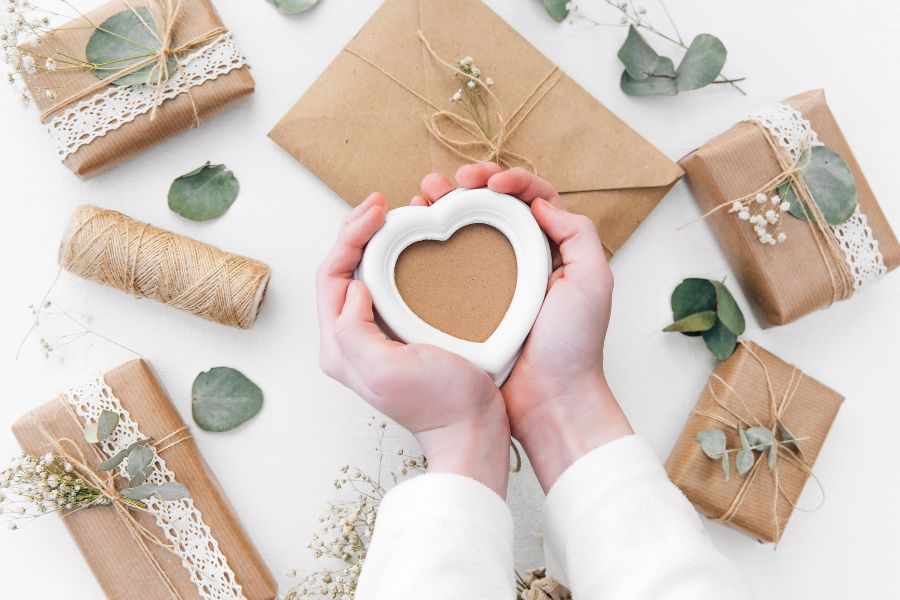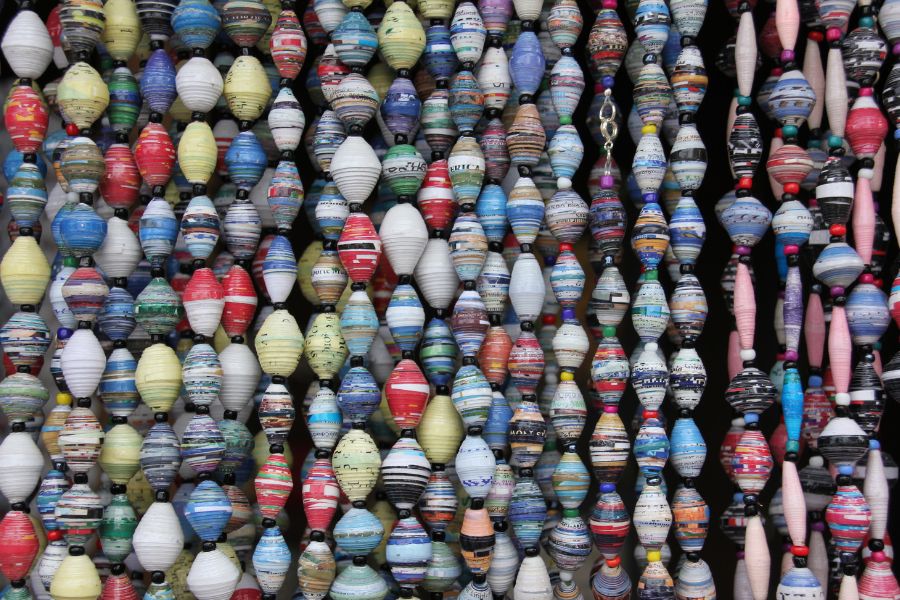Eco-friendly paper crafts give a creative and sustainable approach to express artistic abilities while giving the surroundings top priority. These art projects not only reduce waste but also strengthen a closer relationship with the natural world by including sustainable practices and recycled materials.
This post will go over a range of paper crafts that not only look great and are enjoyable to create but also support an environmentally friendly way of living. These projects are meant to inspire imagination and help the earth regardless of your level of experience with crafts.
Contents [show]
Understanding Eco-Friendly Paper Crafting
Eco-friendly paper crafts are art projects created with sustainable materials and techniques. This method not only lessens environmental impact but also encourages the reuse of possibly landfill-bound materials. Emphasizing sustainability will help crafters to enjoy their artistic endeavors without endangering the condition of the earth.
The value of sustainable design is in its capacity to combine environmental awareness with artistic expression. By selecting recycled paper, organic glues, and natural colors, crafters help to reduce carbon footprints and support a cycle of reuse that helps the community as well as the environment.
Using environmentally friendly materials guarantees that making is a safe pastime for all ages, not only about showing care for the earth. Many conventional building materials have toxins and chemicals that over time might be hazardous. Conversely, sustainable building materials are safer for both adults and children since their non-toxic components usually reflect.

Here are some key benefits of eco-friendly paper crafts:
- Reduces Waste: By using recycled materials, paper crafts help reduce the demand for new resources and lower the amount of waste produced.
- Conserves Natural Resources: Sustainable practices in paper crafts help conserve finite resources like water and trees, which are often heavily exploited in the production of new paper.
- Supports Local Economies: Purchasing supplies from local artisans and suppliers who prioritize sustainability can help bolster local economies and encourage more eco-friendly practices within communities.
- Enhances Creativity: The challenge of using recycled and natural materials for your paper crafts can spark creativity. pushing crafters to think innovatively and develop unique artistic expressions.
Materials Needed for Eco-Friendly Paper Crafts
Creating eco-friendly paper crafts starts with selecting the right materials. By choosing sustainable and recycled components, crafters can ensure that their projects are environmentally responsible from the ground up. Here’s a guide to sourcing the essential materials you’ll need for your sustainable crafting endeavors.
Recycled Paper
- Types: Look for post-consumer waste paper, newspaper, and cardboard, which can be easily transformed into various paper crafts.
- Sourcing Tips: Visit local recycling centers, ask friends and family for old magazines and mail, or use scraps from previous projects.
Natural Adhesives
- Types: Opt for organic glue, homemade paste made from flour and water, or natural gum adhesives.
- Sourcing Tips: Check the labels for non-toxic, biodegradable ingredients when purchasing, or make your own adhesives at home using simple recipes.

Eco-Friendly Coloring Agents
- Types: Natural dyes made from spices, vegetables, and plants offer a safe alternative to synthetic colorants.
- Sourcing Tips: Create your own dyes using ingredients like turmeric, beetroot, or spinach. Purchase from eco-conscious suppliers that certify their products as organic or natural.
Sustainable Embellishments
- Types: Items like dried flowers, leaves, seeds, and fabric scraps add natural beauty to your paper crafts.
- Sourcing Tips: Collect materials from your own garden or nature walks, and reuse textiles from old clothing or linens instead of buying new decorations.
Tools and Equipment
- Types: Reuse old scissors, brushes, and molds. When purchasing new, choose items made from sustainable materials like bamboo or recycled metal.
- Sourcing Tips: Invest in high-quality tools that will last longer, reducing the need to replace them frequently. Look for second-hand tools at thrift stores or online marketplaces.

By carefully selecting your materials and tools, you can ensure that your paper crafts not only produces beautiful results but also aligns with eco-friendly values. This approach not only benefits the environment but also enriches yo
Simple Eco-Friendly Paper Craft Projects for Beginners
Starting with eco-friendly paper crafts is an excellent way for beginners to dive into the world of sustainable art. These simple projects use minimal materials, most of which can be sourced from recycled items around your home, making them both environmentally friendly and easy to tackle. Here are a couple of projects to get you started on your crafting journey.
Homemade Recycled Paper
Materials Needed:
- Scrap paper (old newspapers, bills, junk mail)
- Blender or food processor
- Warm water
- Fine mesh screen or old window screen
- Sponge
- Rolling pin or glass bottle
Instructions:
- Tear the scrap paper into small pieces and soak them in warm water for a few hours.
- Blend the soaked paper and water into a pulp.
- Pour the pulp onto the screen spread over a sink or large bowl.
- Spread the pulp evenly with your hands.
- Use a sponge to press out excess water.
- Let the pulp dry on the screen or transfer it to a cloth for faster drying.
- Once dry, peel off your new sheet of recycled paper.

Custom Greeting Cards from Scrap Paper
Materials Needed:
- Handmade or recycled paper
- Natural adhesives
- Sustainable embellishments (dried flowers, leaves, fabric scraps)
- Markers made with non-toxic ink or natural dyes
Instructions:
- Cut the recycled paper to your desired card size.
- Decorate the front of the card using your natural adhesives to attach your chosen embellishments.
- Use markers to add messages or additional designs.
- Allow everything to dry completely before handling or sending.
Eco-Friendly Bookmarks
Materials Needed:
- Recycled cardstock or thick paper
- Natural yarn or string
- Hole punch
- Non-toxic markers or paints
Instructions:
- Cut the cardstock into strips about 2 inches wide and 6 inches long.
- Decorate the strips with non-toxic markers or paints, creating your own designs or patterns.
- Punch a hole at one end of the bookmark.
- Thread a piece of natural yarn through the hole and tie it off to create a tassel.
- Let the bookmark dry completely before using it or giving it away as a thoughtful, handmade gift.

Paper Beads for Jewelry Making
Materials Needed:
- Glossy magazines or old calendars
- Scissors
- Toothpicks or wooden skewers
- Non-toxic glue
- String or thin wire for threading beads
Instructions:
- Cut the paper into long, thin triangles. The base of the triangle will determine the bead’s width.
- Starting at the base of the triangle, roll the paper tightly around a toothpick.
- Once rolled, secure the tip of the triangle with a small amount of non-toxic glue.
- Slide the bead off the toothpick and allow it to dry.
- String the beads onto your choice of string or wire to create unique bracelets, necklaces, or earrings.
Decorative Paper Flowers
Materials Needed:
- Coffee filters or any thin, recycled paper
- Non-toxic watercolor or natural dyes
- Floral wire
- Green floral tape
Instructions:
- Straighten the coffee filters and cut them into petal forms.
- Either natural dues or watercolors will color the petals.
- Gather several petals once dry and pinch them at the base to create a flower.
- For support, wrap the petral bases with floral wire.
- Wrapping the wire with green floral tape will produce a stem of your paper flower.
- Either arrange several flowers as individual decorations or as a bouquet.
These paper crafts are not only simple and fun but also promote the use of materials that might otherwise be discarded, aligning perfectly with eco-friendly practices.
Intermediate Paper Craft Projects
Once you have confidence in simple environmentally friendly paper crafts, you could be ready to tackle more challenging projects requiring advanced knowledge and imagination. Those who have mastered the principles and are wishing to produce more complex and detailed crafts will find these intermediate paper crafts ideal.
Here is a list of projects combining sustainable building methods with artistic expression.

DIY Eco-Friendly Paper Mache
Materials Needed:
- Recycled newspaper or paper scraps
- Natural glue or homemade paste
- Balloons or reusable molds
- Non-toxic paint or natural dyes
Instructions:
- Tear the paper into small strips.
- Mix natural glue with water to create a paste.
- Dip the paper strips into the paste and apply them to the balloon or mold, layering until the object is fully covered.
- Let it dry completely, then pop the balloon or remove the mold.
- Paint or decorate with non-toxic paints or natural dyes to finish your paper mache.
Sustainable Home Decor Items
Materials Needed:
- Recycled cardstock or heavy paper
- Natural fibers for embellishment (jute, hemp, cotton)
- Eco-friendly adhesive
- Non-toxic varnish or sealant
Instructions:
- Design and cut out intricate patterns from the cardstock. Ideas include geometric shapes for wall art or decorative panels for lanterns.
- Assemble the pieces using eco-friendly adhesive to form your decor item.
- Apply a coat of non-toxic varnish to protect and enhance the item.
- Add natural fibers as accents or handles, securing them with adhesive.
Handcrafted Paper Clock
Materials Needed:
- Recycled thick paper or cardboard
- Clock movement kit (preferably salvaged from an old clock)
- Non-toxic paint or markers
- Natural glue
Instructions:
- Cut the cardboard into a circle or any desired shape for the clock face.
- Decorate the face with non-toxic paints or markers.
- Install the clock movement kit according to the manufacturer’s instructions.
- Attach a mechanism holder at the back using natural glue.
These intermediate paper crafts will not only improve your crafting skills but also enhance your living space with unique, handmade items that reflect your commitment to sustainability.

Advanced Projects for Skilled Crafters
For those who have honed their paper crafting skills and are looking for a challenge, advanced projects offer an opportunity to push the boundaries of creativity and craftsmanship. These projects require precision, patience, and a deeper understanding of sustainable materials and techniques. Here are some sophisticated eco-friendly paper crafts that are perfect for experienced crafters looking to showcase their expertise.
Intricate Paper Sculptures
Materials Needed:
- High-quality recycled paper or cardstock
- Precision cutting tools
- Eco-friendly adhesives
- Frame or display box for presentation
Instructions:
- Plan your sculpture, drawing templates if necessary.
- Carefully cut the paper into detailed shapes and components using precision tools.
- Assemble the pieces using eco-friendly adhesives, paying attention to structural integrity.
- Consider mounting the completed sculpture in a frame or display box to protect it and enhance its visual appeal.
Large-Scale Paper Installations
Materials Needed:
- Recycled paper or lightweight cardstock
- Natural or homemade adhesive
- Suspension system (e.g., wires, hooks) for hanging
- Non-toxic paints or stains
Instructions:
- Design your installation, considering the space where it will be displayed.
- Create multiple elements that will form part of the larger installation.
- Paint or stain the elements using non-toxic materials.
- Carefully assemble the pieces, using a suspension system to hang and display the installation securely.
Eco-Friendly Paper Cut Light Boxes
Materials Needed:
- Recycled cardstock or suitable paper
- LED lights (preferably recycled or repurposed)
- Cutting mat and precision knife
- Frame or box to house the light
Instructions:
- Design layered scenes or patterns that will be cut into the paper.
- Carefully cut out the designs using a precision knife, ensuring that all layers align correctly.
- Mount the layers in a frame or box, spacing them out to create depth.
- Install LED lights behind the scenes to illuminate the cut-outs, creating a mesmerizing light and shadow effect.
Artistic Recycled Paper Collage
Materials Needed:
- Assortment of recycled papers (magazines, newspapers, brochures)
- Eco-friendly adhesives
- Canvas or heavy recycled paper as a base
- Natural varnish or sealant
Instructions:
- Gather a diverse collection of paper materials with various textures and colors.
- Cut or tear the papers into desired shapes and sizes.
- Arrange your pieces on the canvas or base paper to form a cohesive artistic image or abstract design.
- Secure the pieces with eco-friendly adhesive, carefully layering elements as needed.
- Once complete, apply a natural varnish to protect the artwork and enhance the colors.
Sustainable Origami Art Installation
Materials Needed:
- Variety of recycled papers
- Instructions for complex origami shapes
- Thread or thin wire for hanging
- Spatial framework for installation (optional)
Instructions:
- Select recycled papers of different weights and colors suitable for folding.
- Fold a series of complex origami figures such as animals, flowers, or geometric shapes.
- Strategically attach threads or wires to the origami figures.
- Hang the origami pieces from a framework or directly from the ceiling in a cascading or spatially dynamic arrangement.
Handmade Paper Fabrication with Natural Inclusions
Materials Needed:
- Recycled paper pulp
- Natural inclusions (leaves, flower petals, grasses)
- Large tub for papermaking
- Screen or mesh for forming sheets
- Press or heavy objects for drying
Instructions:
- Prepare the paper pulp from recycled papers mixed with water.
- Mix your natural inclusions into the pulp to create textures and patterns.
- Pour the pulp onto a screen set over a tub, spreading it evenly.
- Press the pulp gently to form a thin layer and allow the water to drain.
- Once semi-dry, transfer the paper onto a flat surface and press with heavy objects to fully dry.
- Peel off the finished sheets, which now feature beautiful natural patterns embedded within the paper.
These advanced projects not only provide a fulfilling creative outlet but also serve as impressive showcases of what can be achieved with eco-friendly materials and a commitment to sustainable crafting practices.
Tips for Reducing Waste While Crafting
Though it’s a fun and artistic endeavor, crafting usually generates a lot of waste. A few strategic ideas will help you greatly cut the waste created in your crafting sessions. In paper crafts, in particular, this is especially important since little scraps and unused supplies can rapidly gather.
These clever ideas will help you cut waste and make your paper crafts more ecologically friendly.
Plan Your Projects Carefully
Efficient Use of Materials: Plan your projects to best maximize the use of materials before beginning any paper crafts. Measure twice and cut once to cut waste in half-needed. Use layouts and templates designed to let you fit several pieces on one sheet of paper.
Reuse and Recycle Paper Scraps
Creative Reapplications: Save all of your paper waste in a specific container. Smaller projects or adding decorative accents to your paper crafts could find great benefit from these. Collages, greeting cards, or filler material in paper mache can all be created from even the smallest bits.
Choose Quality Over Quantity
Select Durable Materials: Choose robust materials: Purchasing premium paper and supplies for your paper crafts not only improves the appearance and feel of your end result but also helps to avoid regular replacement needs. Often, better materials are reusable more times before they run out.
Digital Drafting Before Physical Crafting
Minimize Paper Usage: Use digital tools to prototype your designs before cutting actual paper for complicated paper crafts. Once you switch to physical materials, software such as vector graphic editors can help you precisely refine your designs, so lowering the amount of trial and error.
These techniques will help you greatly cut waste in your craft projects, so transforming your paper crafts from a delight and a creative inspiration into a shining example of sustainability.
Conclusion
Projects with paper presents a special chance to be creative while still considering environmental effect. Using environmentally friendly methods will help crafters create good effects on the earth as well as their works. Sustainable paper crafts not only cut waste but also encourage a community of producers to adopt greener techniques.




















